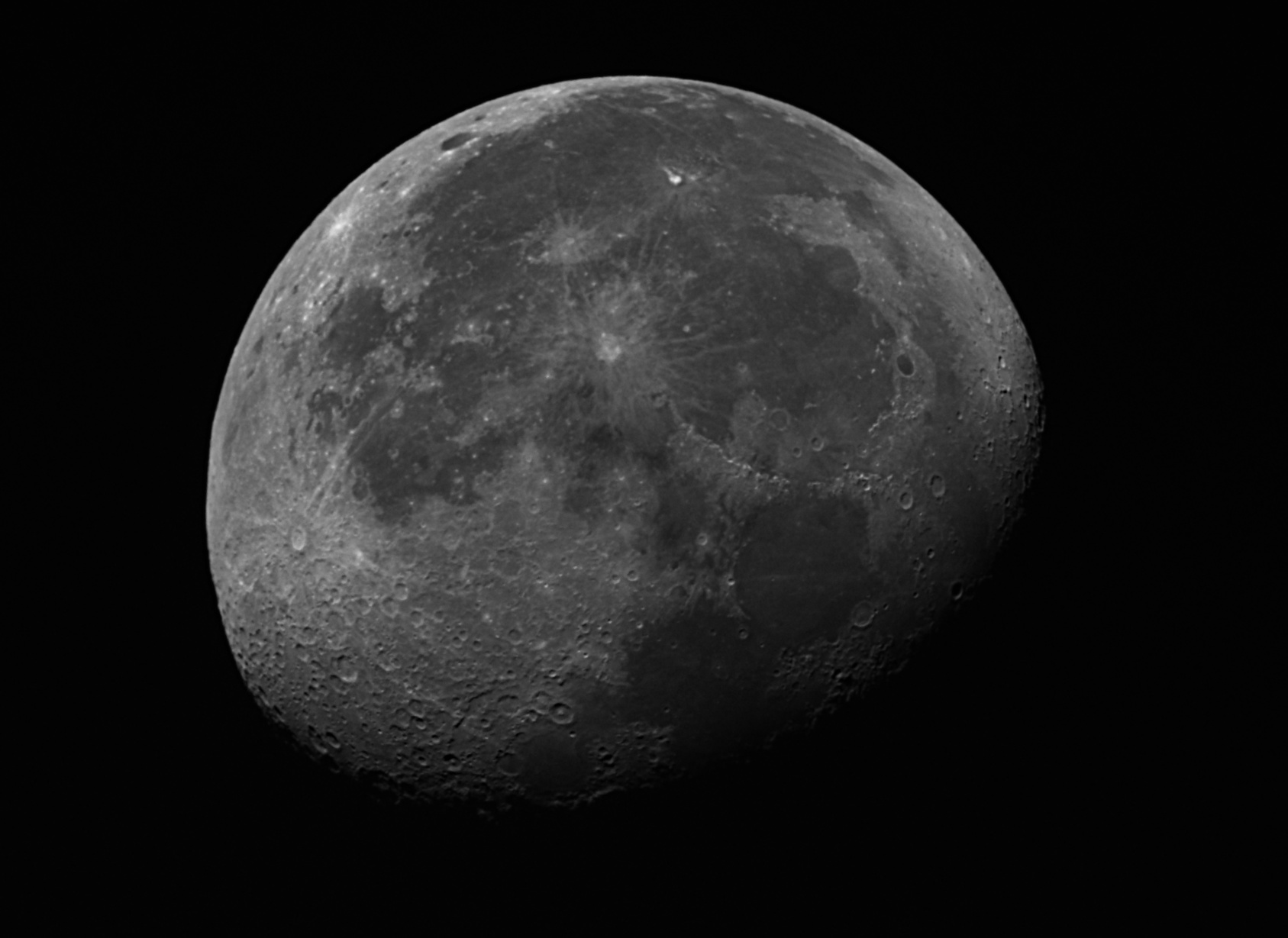
Our Moon is one of approximately 140 known moons in the solar system. The Moon has a diameter of 2,160 miles, which is larger than Pluto (1,430 miles), but smaller than Mercury (3,031 miles). Two moons in the solar system are larger than Mercury: Ganymede (3,280 miles) and Titan (3,200 miles). The smallest known moon in the solar system is generally considered to be Deimos orbiting Mars, although there are smaller objects orbiting in the rings of Saturn. It is only 7 miles in diameter.
The dark mare at the bottom of this image is Mare Nectaris. This image of the Moon shows the circular formation of Rupes Altai surrounding Mare Nectaris. Rupes Altai includes 3000 foot cliffs, likely formed as a result of the same impact event that formed Mare Nectaris. You can also see rays formed by ejecta thrown from Tycho crater extending so far from Tycho that one of the rays crosses Rupes Altai.
This image also shows the darker areas in Mare Vaporum very well. These darker areas were likely the result of lava flows that occurred at different times from the lava flows that formed the lighter areas. In this image, the floor of Aristarchus crater, shown in the upper center of the image, appears very white as compared to the remainder of the Moon's surface features. The rays extending from Copernicus crater show very well in this image. The Moon was 75% illuminated when this image was taken.
This CCD image of the Moon was taken with a Takahashi FCT-150 telescope using an STL-11000M CCD. The image was taken from my backyard in Scottsdale, Arizona.
January 23, 2011
Image by Sid Leach
Scottsdale, Arizona.
Recent Images.
Complete list of images.
Description of equipment used to acquire images.
Home
Feedback and comments should go to Sid